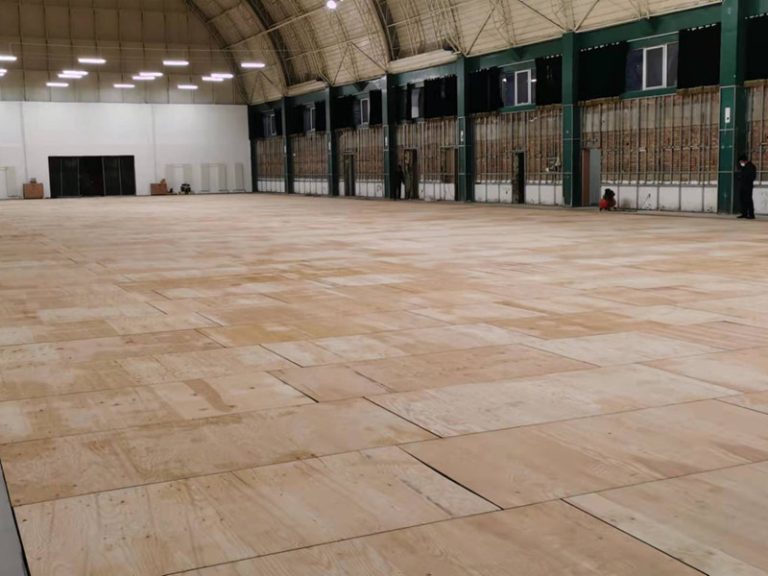Top Volleyball Flooring Options Compared
1. Hardwood – The Professional Standard
Most competitive leagues and tournaments use hardwood flooring, typically maple or beech, due to its excellent playability.
Why Choose It?
Predictable ball rebound for consistent gameplay
Natural shock absorption protects joints
Long lifespan with proper refinishing
Best For: College arenas, professional courts, high-level training facilities
2. Vinyl & PVC – Affordable and Versatile
For schools and recreational centers, synthetic volleyball flooring offers a budget-friendly alternative with decent performance.
Key Benefits:
Water-resistant and easy to clean
Softer surface reduces injury risk
Modular tiles allow quick repairs
Limitations:
Not as responsive as hardwood
May wear down faster under heavy use
3. Rubber Tiles – Durable and Low-Maintenance
Rubber sports flooring is common in multi-purpose gyms due to its durability and shock absorption.
Advantages:
Slip-resistant even when sweating
Handles heavy foot traffic well
Easy to install and replace sections
Drawbacks:
Ball bounce differs from hardwood
Can feel too firm for competitive play
4. Polyurethane (PU) – A High-Performance Hybrid
PU surfaces blend the benefits of synthetic and wood floors, making them a premium choice for modern facilities.
Why It Stands Out:
Seamless, smooth finish with no gaps
Superior cushioning for player comfort
Customizable colors and designs
Considerations:
Higher upfront cost
Requires professional installation
What to Look for in Volleyball Flooring
Shock Absorption – Reduces stress on knees and ankles.
Traction – Prevents slips while allowing quick lateral movements.
Ball Response – Ensures consistent bounce for fair play.
Durability – Must withstand spikes, dives, and frequent use.
Maintenance Needs – Some materials require refinishing, while others just need basic cleaning.
Keeping Your Court in Top Shape
Hardwood: Refinish periodically; avoid excess moisture.
Vinyl/Rubber: Clean with mild detergent; inspect for wear.
PU Coatings: Check for cracks; reapply topcoat as needed.
Whether you prioritize professional-grade performance, cost efficiency, or multi-use functionality, the right volleyball flooring material can enhance gameplay and extend the life of your court. For specialized projects, consulting a sports surface expert ensures the best results.


